This post may contain affiliate links. By clicking and making a purchase through the links, I earn a small commission at no extra cost to you. See my disclaimer for more information. This and display ads allow me to keep the site up to date and give back.
Wondering about living in Tenerife? Let me help! I’m a full-time digital nomad who spent two months living on this beautiful island.
As the digital nomad lifestyle gains popularity, finding the right spot to set up your laptop and live your dream can be exciting and overwhelming.
Tenerife is quickly becoming a favorite among digital nomads in Europe, thanks to its affordable living, beautiful weather year-round, and endless opportunities for adventure.
From the beautiful beaches to the scenic hiking trails in the north, Tenerife is full of surprises and lessons for anyone considering moving.
If you’re considering Tenerife as your next digital nomad destination or just curious about what life in Tenerife is like, you’re in the right place. Let’s dive into what makes Tenerife a great (and sometimes challenging) place to live and work remotely.
Where is Tenerife?
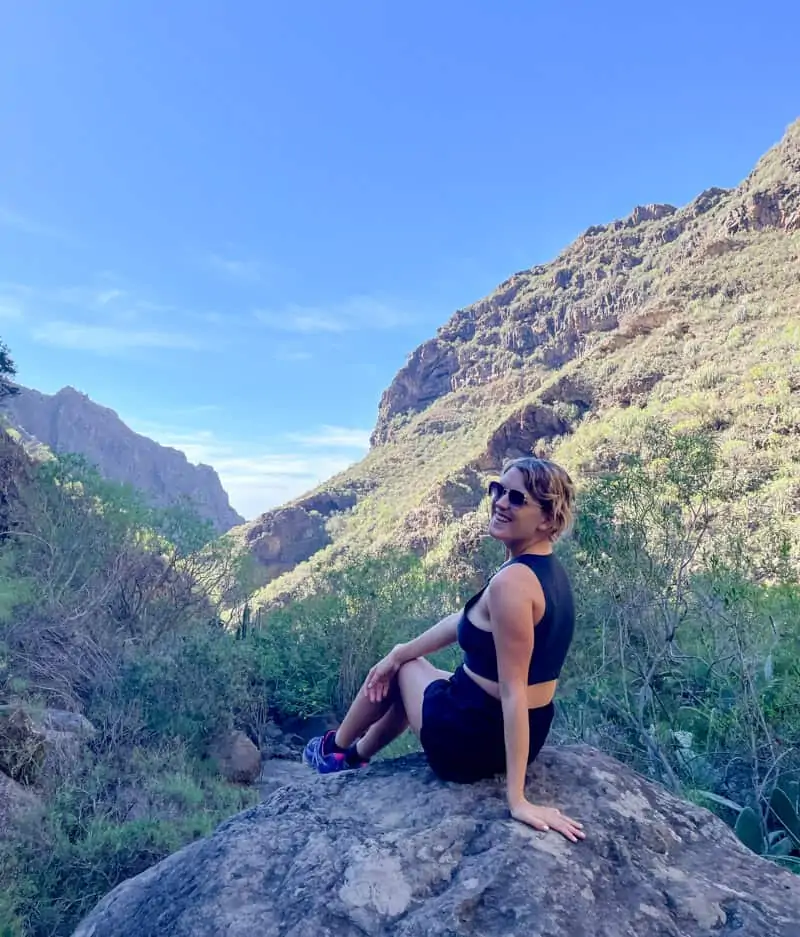
You might be wondering, “Where exactly is Tenerife?” Tenerife is the largest of Spain’s Seven Canary Islands, nestled in the Atlantic Ocean, just off the northwest coast of Africa. It’s a place where the Atlantic meets diverse landscapes, from stunning beaches to dramatic volcanic terrain.
Tenerife’s location is unique – it’s a slice of Spain positioned closer to Africa, offering a blend of European accessibility with the allure of an exotic island escape.
The island’s natural beauty is its standout feature. Here, you can start your day with a sunrise on a serene beach and end it with a hike through lunar-like volcanic landscapes.
With flights from major European cities, getting here is easier than you might think. And once you’re here, the island’s beauty makes it hard to think about leaving.
The island’s natural diversity isn’t just a backdrop for your work; it’s an invitation to balance life and work in a setting that inspires creativity and relaxation.
If you’re seeking a destination that combines natural splendor with the ease of a remote working lifestyle, Tenerife is a place you’ll want to explore.
Getting to Tenerife
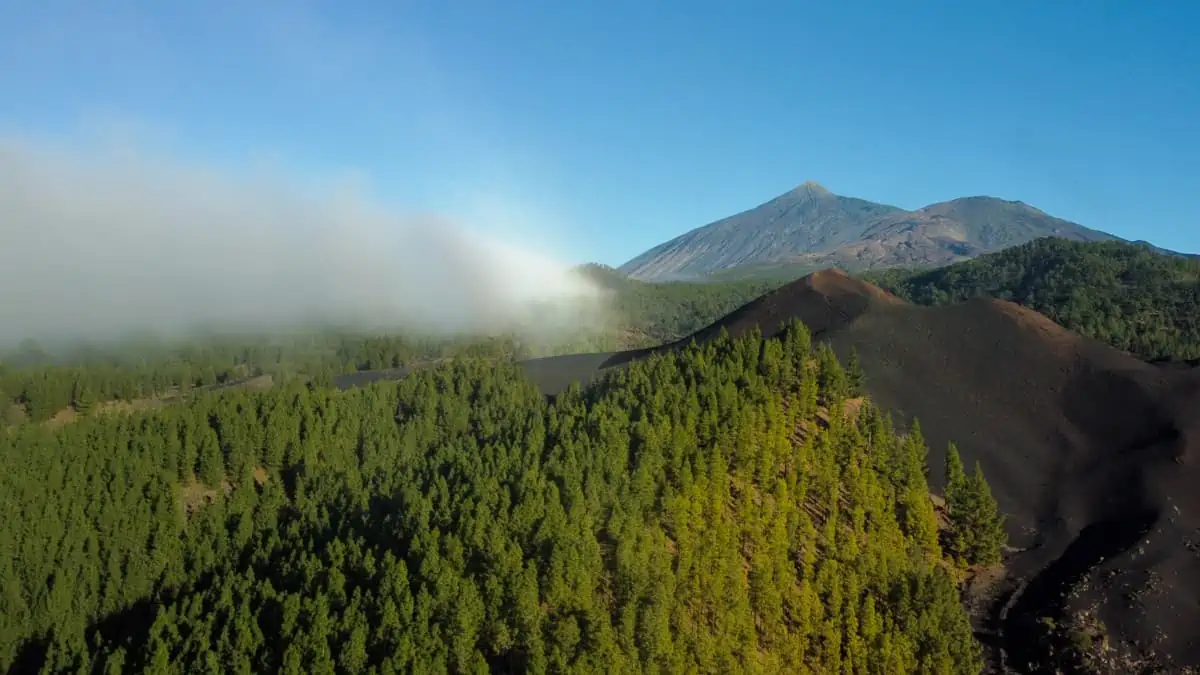
Reaching Tenerife is more straightforward than you might think, making it an inviting destination for digital nomads. The island is well-connected to the rest of the world with two main airports: Tenerife North (TFN) and Tenerife South (TFS).
Tenerife South Airport is considered the main airport and is where I recommend arriving if you’re staying in the south. Otherwise, you’re looking at a €100+ taxi or a long bus journey.
For European travelers, numerous budget airlines like Ryanair and EasyJet offer direct and affordable flights, bringing you to this island retreat in just a few hours. I flew there for €30 from Portugal!
Airlines that fly to Tenerife include Ryanair, TAP Air, Vueling, and Iberia.
If you’re flying from North America, you’ll likely connect through a major European city, adding an extra leg to your journey and also an opportunity for a mini-adventure.
Once you land, getting around Tenerife might require a bit more planning. While there is a public bus system, it’s not the most convenient for exploring the island, especially if you’re looking to travel between the north and south.
Renting a car is highly recommended. It gives you the freedom to discover Tenerife’s diverse landscapes at your own pace, from the bustling streets of Santa Cruz to the serene beaches in the south. Plus, driving along the coast offers some truly breathtaking views.
I use and love Discover Cars to find the best rates worldwide!
Advantages of living in Tenerife
Here are some reasons pros and cons of living in Tenerife to consider.
Why would you want to live here? I moved to Tenerife because it was getting cold in mainland Europe, and I heard it was the warmest place to be during winter.
When you want to visit every country in the world, it doesn’t take much for me to pack up my bags and move somewhere spontaneously. But I realize you may want more rationale for picking up your life and moving to Tenerife.
Year-round warm weather
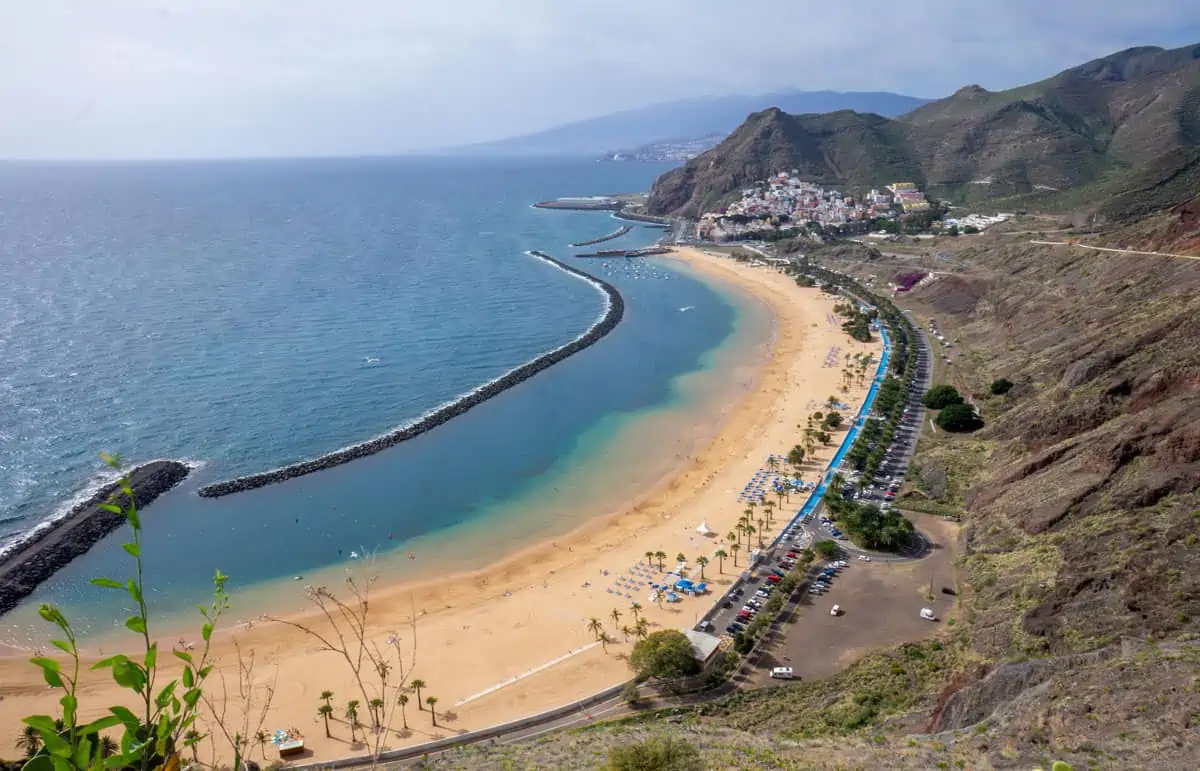
Tenerife has a Mediterranean-subtropical climate, with 320 days of sun a year! It’s known as the “Island of Eternal Spring,” with warm temperatures year-round. This means you can enjoy outdoor activities like hiking, beach days, or exploring quaint villages any time you want.
In the summer months, temperatures are between 24ºC and 33ºC, and in the winter, 18ºC and 21ºC.
However, it’s important to know that Tenerife has microclimates around the island. The south is MUCH warmer than the north of Tenerife, at least in the winter.
I spent my first few weeks living in the north and had to buy new sweaters because I wasn’t prepared. But then I moved to the south, wearing sundresses most days.
The other thing to know about Tenerife’s weather is that it’s susceptible to ‘Calimas,’ which are wind storms from the Sahara. I experienced two, and they were entirely different. The first Calima brought a warm wind over Christmas, and we enjoyed daily temperatures of 30ºC+.
I was so excited when I heard another Calima was coming, only this time, it brought vicious winds and sand for over a week. It made Tenerife look grey and apocalyptic! But Calima’s aren’t that common, so you’ll mostly enjoy non-stop sunshine.
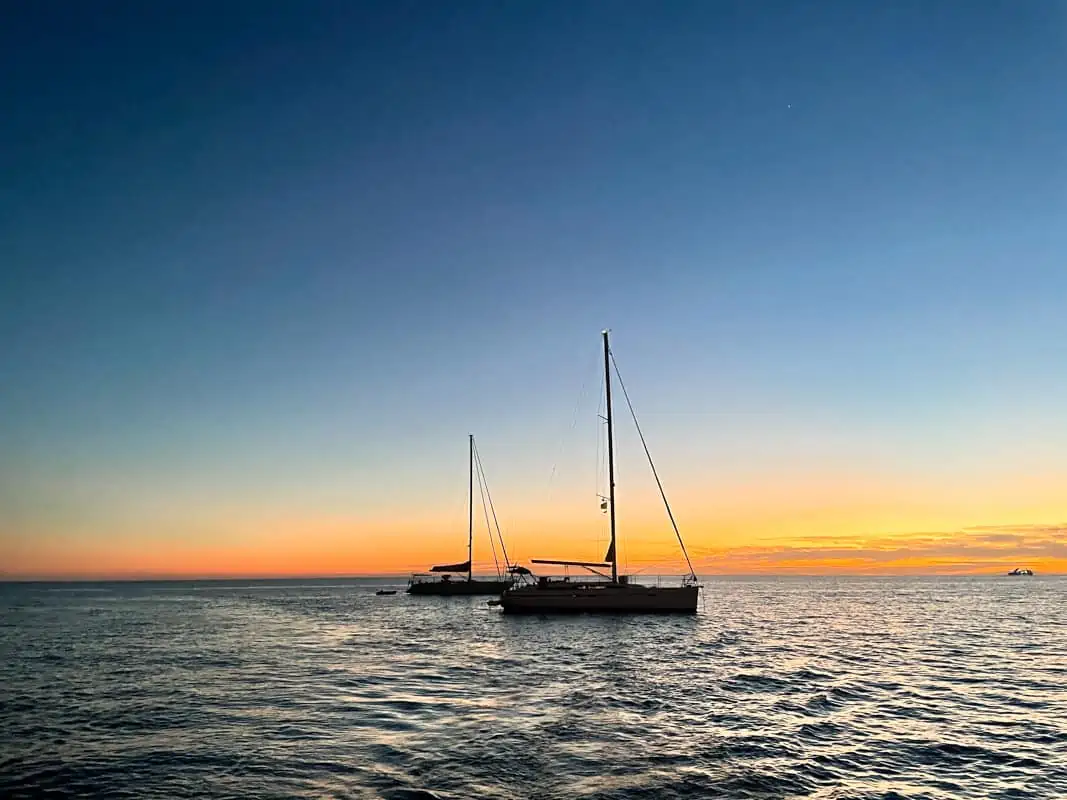
Same time zone as mainland Europe
Many digital nomads in Europe choose to live in Tenerife because it has Greenwich Mean Time (GMT), the same as the UK and Portugal. If you’re looking for somewhere to escape the cold European winters but need to stay within the same time zone, Tenerife is a great choice.
Digital nomad community
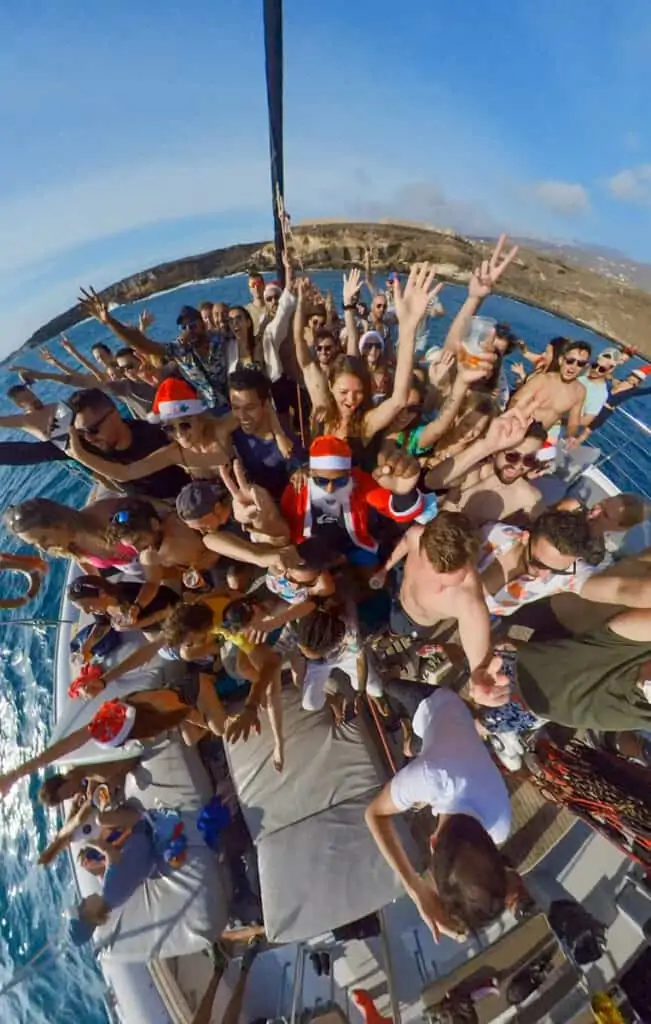
Tenerife is becoming a hotspot for digital nomads. The community here is welcoming and diverse, offering an excellent network for both professional and social connections.
Whether through co-working spaces or casual meetups, there are plenty of opportunities to connect with like-minded individuals.
Outdoor Adventure
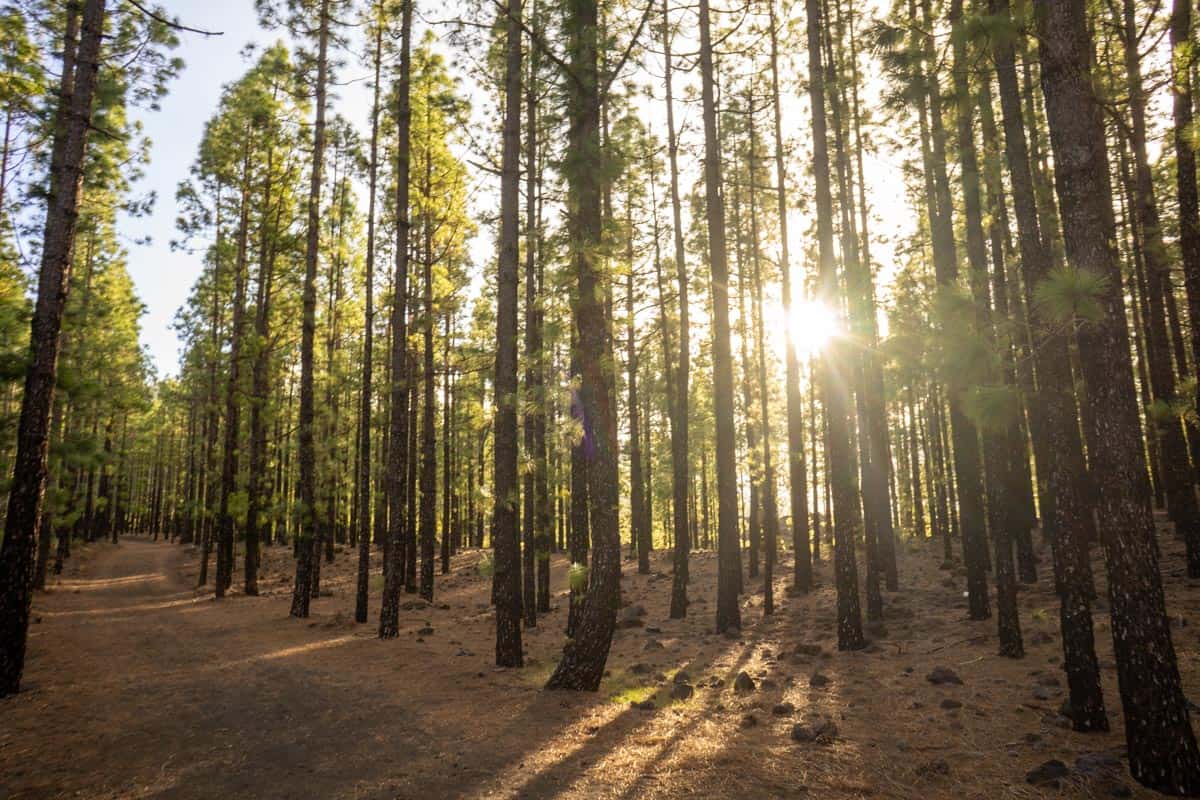
From the sandy beaches to the lunar-like terrain of Mount Teide National Park, Tenerife’s natural beauty is stunning.
It has volcanic black sand beaches, arid desert landscapes, lush green forests full of pines, and several volcanoes – including Spain’s highest peak. Every hike I did in Tenerife brought a completely different view!
Another reason many nomads choose Tenerife is the excellent year-round surf conditions. It’s considered one of the best surfing destinations in Europe, and there are waves for everyone, whether you’re a newbie or an advanced surfer.
Tenerife is a hub for all outdoor adventures. You can go jet skiing, windsurfing, rock climbing, mountaineering, diving, biking, and more. Just about any sport you can think of you can do here!
Safe
Tenerife has a fairly low crime rating and is considered safe to travel. I came here as a solo female traveler and felt safe the entire time, even walking around Playa Las Americas at night.
Tenerife is set up for tourists, so it’s easy to come and live for a few months. All amenities are readily available.
Location
Tenerife’s location off the coast of Africa makes it a unique blend of Spanish and African cultures, and it’s well-positioned for travel to other European and African destinations.
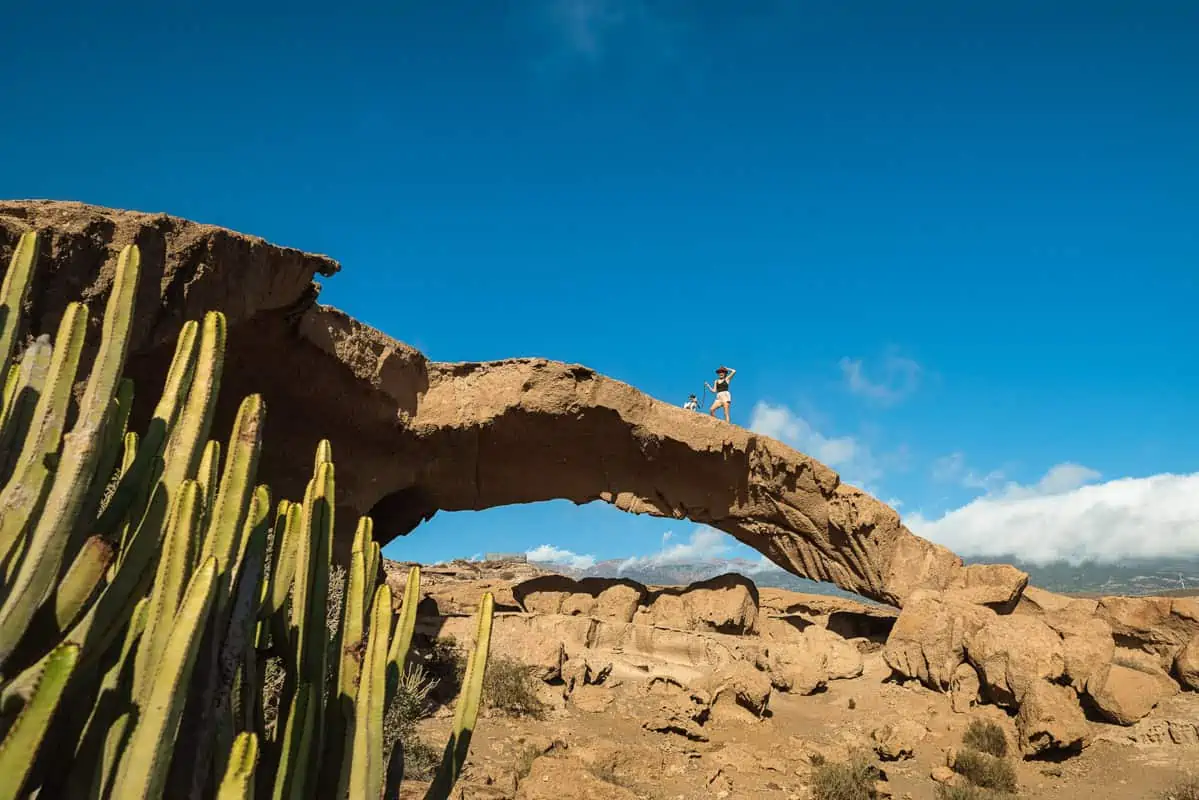
Disadvantages of living in Tenerife
Limited Public Transport
The public transport system isn’t as developed, especially in rural areas, making it challenging to get around without a car.
Island Isolation
Being on an island can sometimes feel isolating, especially if you’re used to living on the mainland with easy access to other cities and countries.
Language Barrier
While Spanish is the official language, not speaking it can be a barrier in certain situations, especially in more local, non-touristy areas.
Seasonal Crowds
Tenerife can get quite crowded with tourists during peak seasons, which might be annoying if you’re living there.
Living in Tenerife offers a unique experience that balances natural beauty with a vibrant expat community. However, it’s important to consider the challenges, such as transportation and seasonal crowds. Like any destination, it has its trade-offs, and what works for one person might not for another.
My personal experience living in Tenerife
Tenerife was not a place I immediately fell in love with, but it grew on me over time. I spent my first three weeks in Puerto de la Cruz, in a somewhat isolated neighborhood without a car.
Even though the north is the more beautiful part of the island, I felt a lot happier when I moved to the south because I had easy access to everything.
That’s not to say you can’t have an enjoyable experience living in the North. Many digital nomads in Tenerife live here and love it – it just wasn’t for me. In the south, I had a much more active social life and got a lot more sunshine.
One of the best parts of my stay has been the connections I’ve made. The digital nomad community here is growing, and I’ve met some incredible people who have become friends and collaborators. We’ve shared tips, experiences, and many sunsets, making my time here richer.
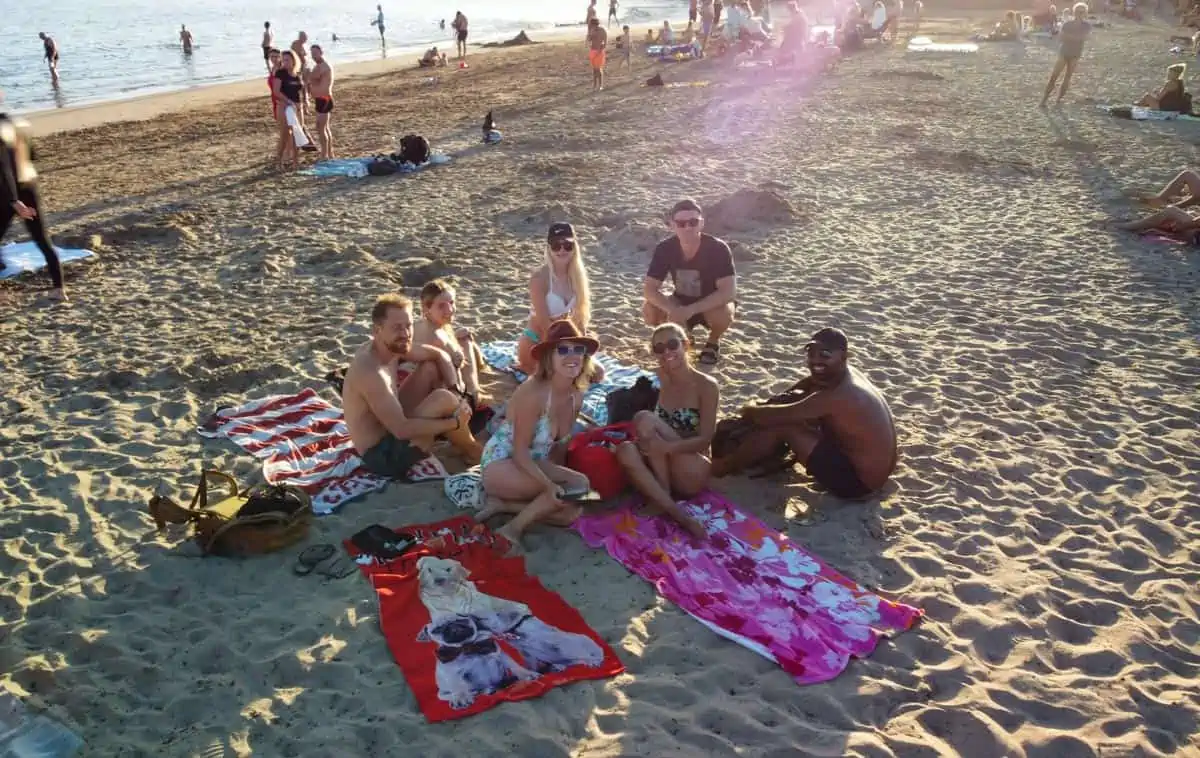
The best week I had in Tenerife was when I rented a car because it allowed me the freedom to get out and explore the island. There’s so much to see here, but it’s challenging without a car.
While Tenerife might not be bustling with cultural hotspots, its charm lies in its laid-back lifestyle and natural beauty. I’ve enjoyed discovering local cafes and small towns, each with its unique flavor. The local markets are a must-visit for fresh produce and are relatively affordable.
Spain digital nomad visas
Tenerife is part of Spain and the Schengen Area.
For European Union Citizens: If you’re an EU citizen, you’re in luck. You can live and work in Tenerife without any special visa, thanks to the freedom of movement within the EU. This makes Tenerife an incredibly accessible destination for European digital nomads.
2. Non-EU Citizens: The process requires a bit more paperwork for those from outside the EU. Typically, you can stay in Tenerife and the Schengen Area for up to 90 days in any 180 day period without a visa.
If you want to stay longer, Spain does have a temporary residence visa for stays longer than 90 days and less than five years. This visa could be a good option if you want to get permanent residency in Spain, as foreigners who have been temporary residents in Spain for five years and meet the conditions are entitled to long-term residence.
Spain also introduced a digital nomad visa in 2023.
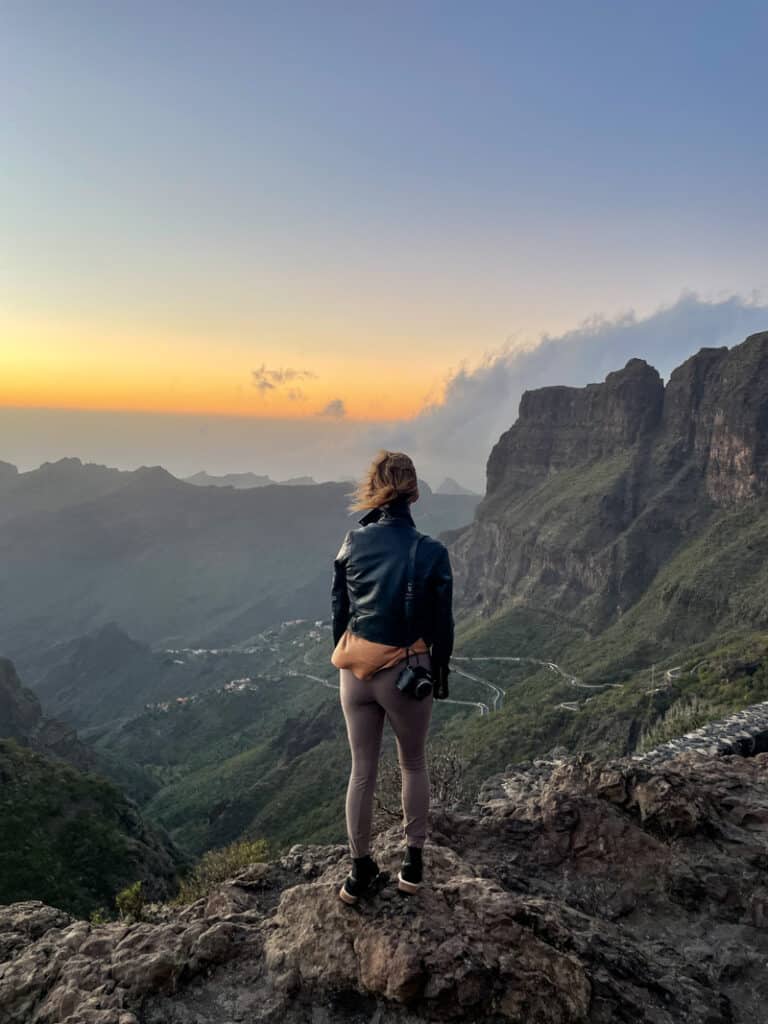
Where to stay in Tenerife
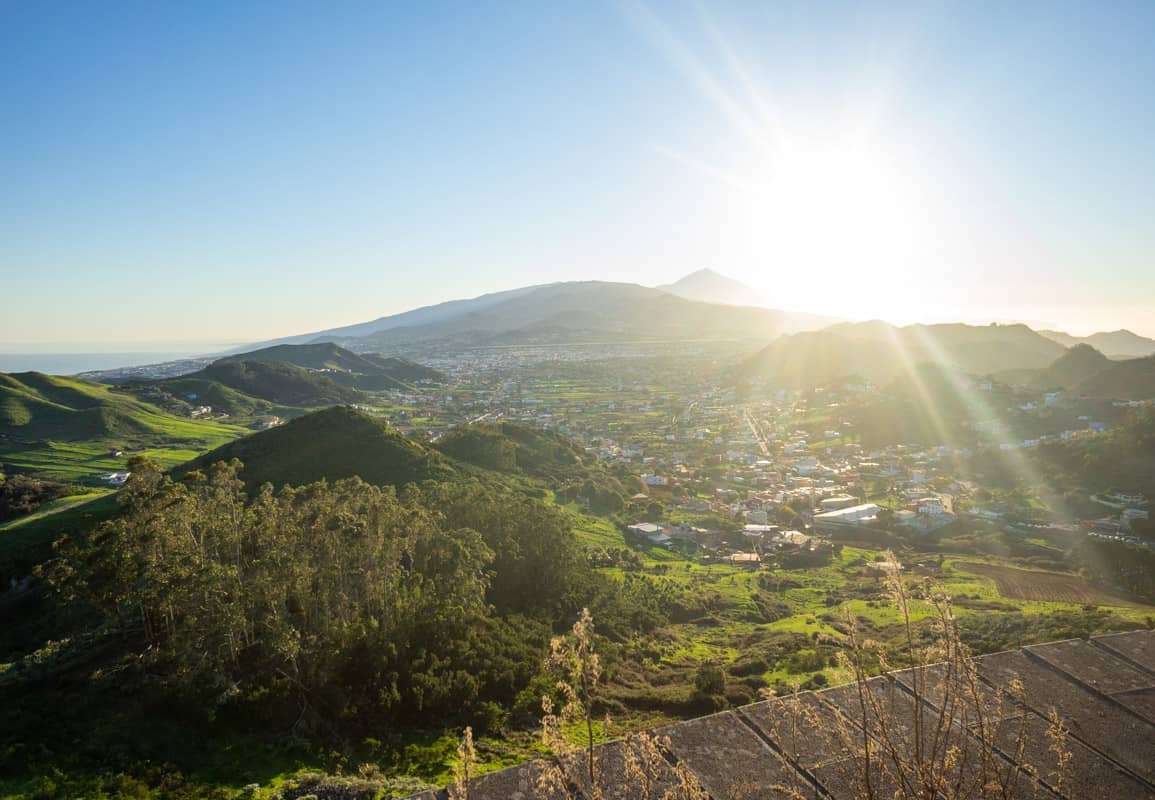
Although it’s a small island, there are many different places to stay in Tenerife, each with its own vibe.
Your biggest decision about where to stay in Tenerife will be whether to live in the north or south of the island. The north is more similar to mainland Spain, with picturesque villages.
The south of Tenerife is more catered to tourists. There, you’ll find many English-speaking people, large resorts, nightclubs, and warmer temperatures.
Many Tenerife digital nomads reside in the south of the island, embracing the year-round sunshine and party atmosphere.
However, you’ll be better off in the north if you wish to experience a more authentic Canarian experience.
In the middle of the island is Mount Teide, the highest point in Spain at 3,7000m. It divides the north and south, and although it’s popular to visit, not many people live around here.
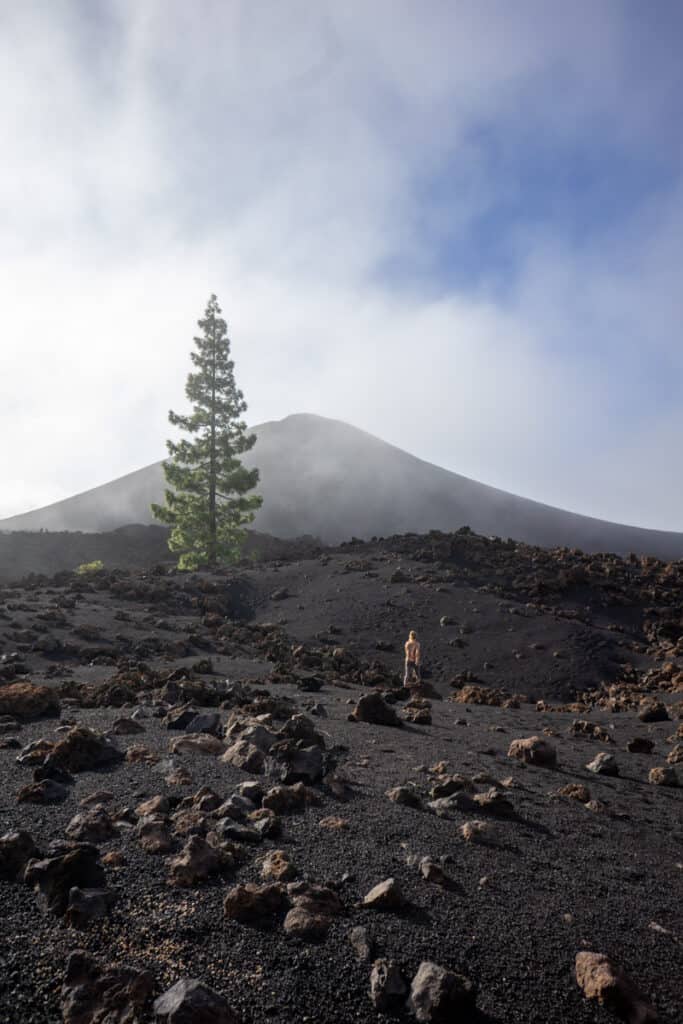
Given that there’s a giant volcano in the middle of the island, the main highway goes along the coast.
It takes about an hour to drive between the north and south, but it takes at least two hours if you take the bus. And that’s if you catch an express bus.
If not, it will take you almost three and a half with transfers. So, you can see that living on one side of the island is inconvenient for visiting the other if you don’t have a car.
Places to live in Tenerife North
Santa Cruz de Tenerife
The island’s capital, Santa Cruz, is perfect for those who love the energy of city life. With an array of shops, restaurants, and cultural activities, it’s a hub for locals and expats.
It’s populated by nearly half of the island’s population, with over 200,000 permanent residents.
It has a much more local atmosphere than the south, and you’ll want to know some Spanish to get around here comfortably.
Santa Cruz is the best place for expats in Tenerife who want to live like a local. Rent prices are considerably lower than other locations, and it’s also close to Anaga rural park, which is great if you love hiking.
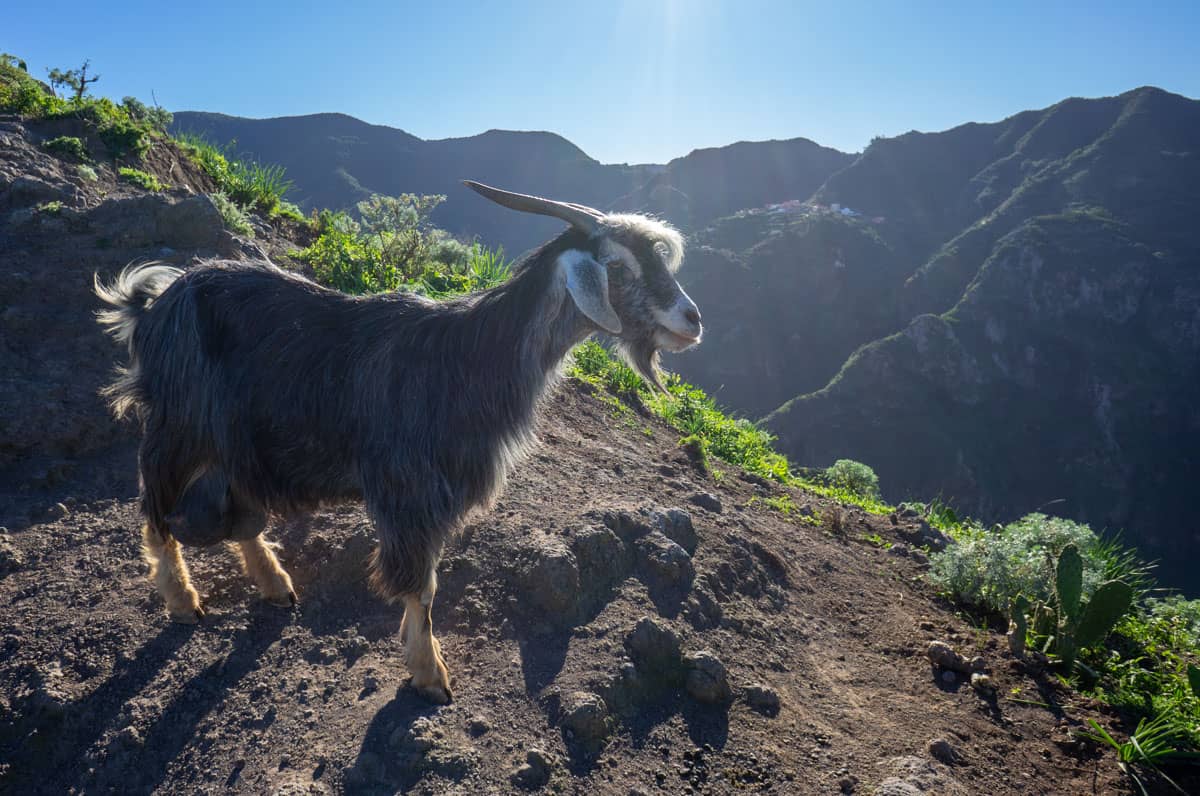
Puerto de la Cruz
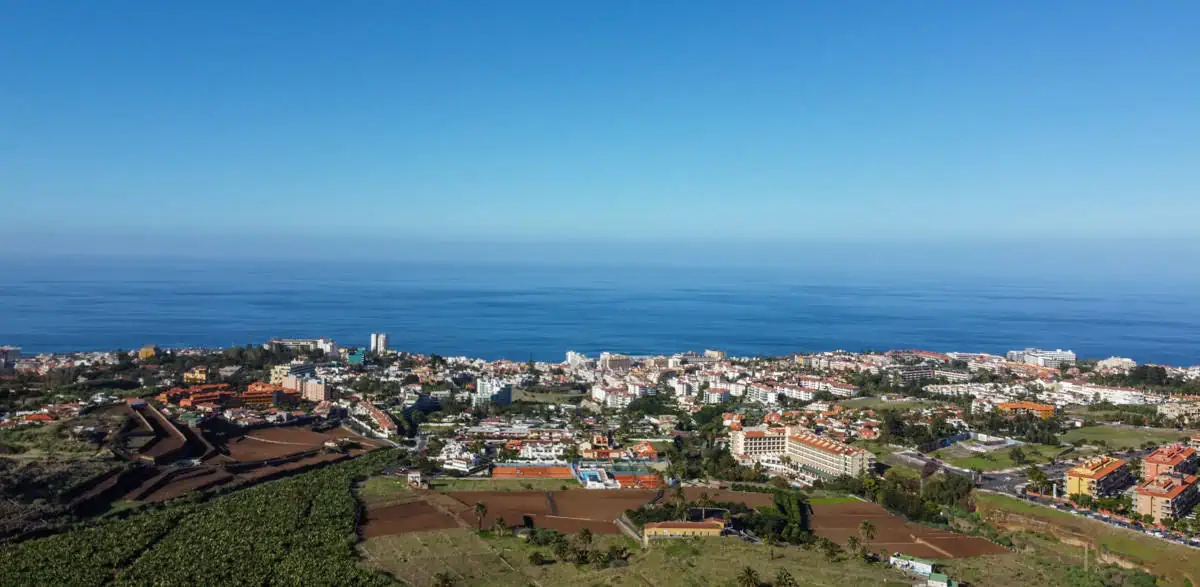
For a more local and authentic experience, Puerto de la Cruz in the north offers a charming stay. It’s less touristy than the south, with lush greenery and historic towns.
I spent my first three weeks living near here at Igikai Coliving. It has a relatively active digital nomad community, with Whatsapp groups you can join.
It’s a cute city with several squares, restaurants, and bars that regularly have live music. It’s right by the sea, so you’ll have quick access to beautiful coastal hikes and Teide National Park.
Another perk of Puerto de la Cruz is that there are beaches in the city center, which Santa Cruz doesn’t have.
Best places to stay in Tenerife South
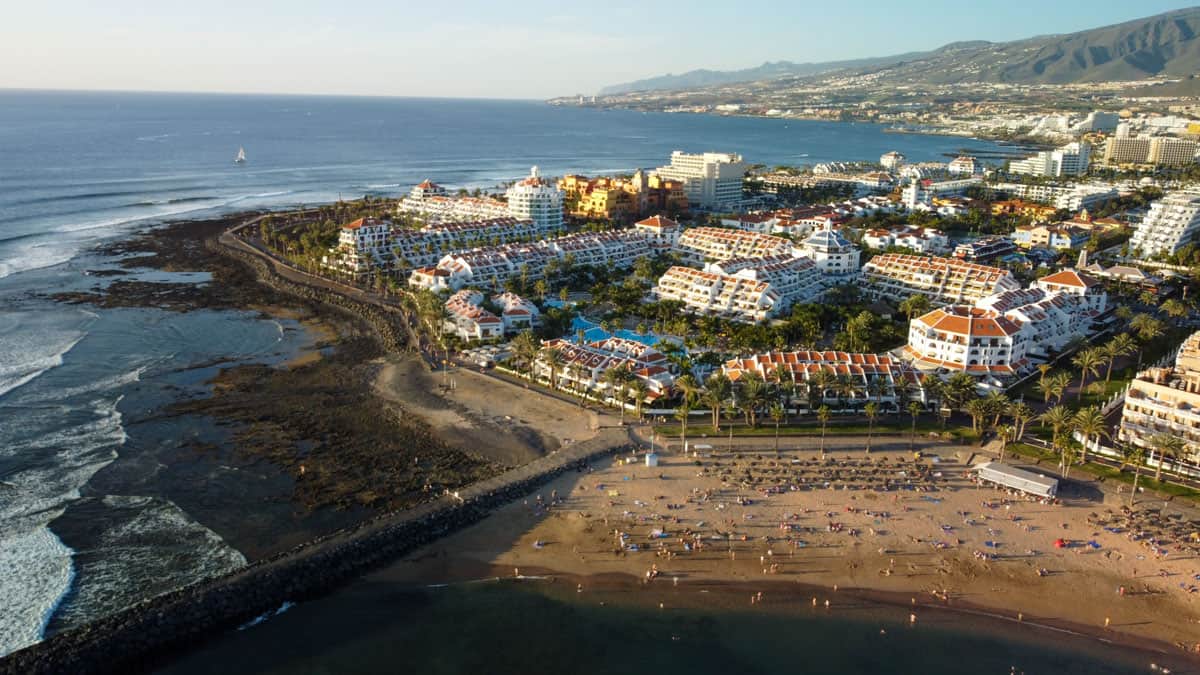
El Médano: Popular among surfers and windsurfers, El Médano is a laid-back town with a strong sense of community. It’s a great spot if you’re into water sports or enjoy a more relaxed, bohemian atmosphere. It has a chilled-out vibe, with many cute cafes and veggie-friendly options.
Costa Adeje: If you’re looking for a more tourist-oriented area with plenty of amenities, Costa Adeje is a great choice. Known for its beautiful beaches and resorts, it’s ideal for those who want a holiday vibe with their work setting. The area is also great for networking with other travelers and digital nomads.
Las Americas: This is where I lived for my second month in Tenerife, and it has pros and cons. It’s home to Playa Las Americas, one of Tenerife’s most popular surfing areas.
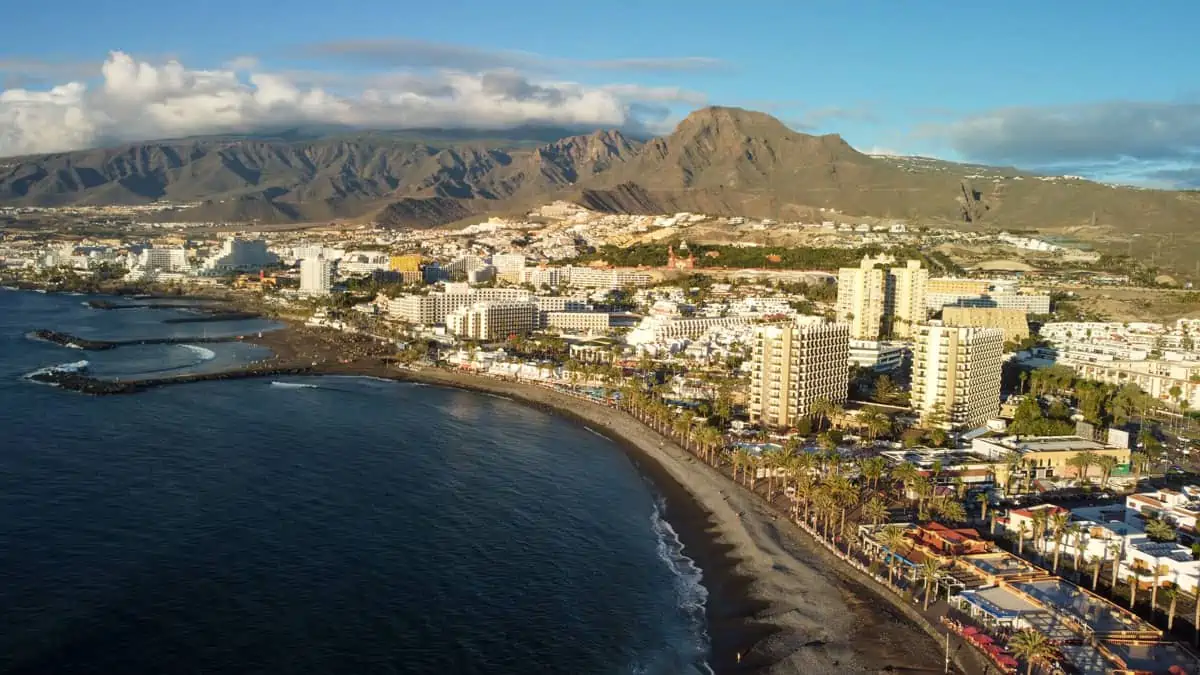
It’s one of the most touristy places on the island of Tenerife, but this means you’ll be in the center of everything, with restaurants, shops, and bars right outside your door.
On the downside, living here can be pretty loud, especially if you live next to the main bar strip called Veronicas. They play music until 4 am.
Los Cristianos: Next to Las Americas is Los Cristianos, my preferred area in Tenerife. It’s got all the perks of Las Americas, yet somehow feels slightly more local.
Being in the center of the south means you can café and bar hop around without worrying about a long bus route or taxi home.
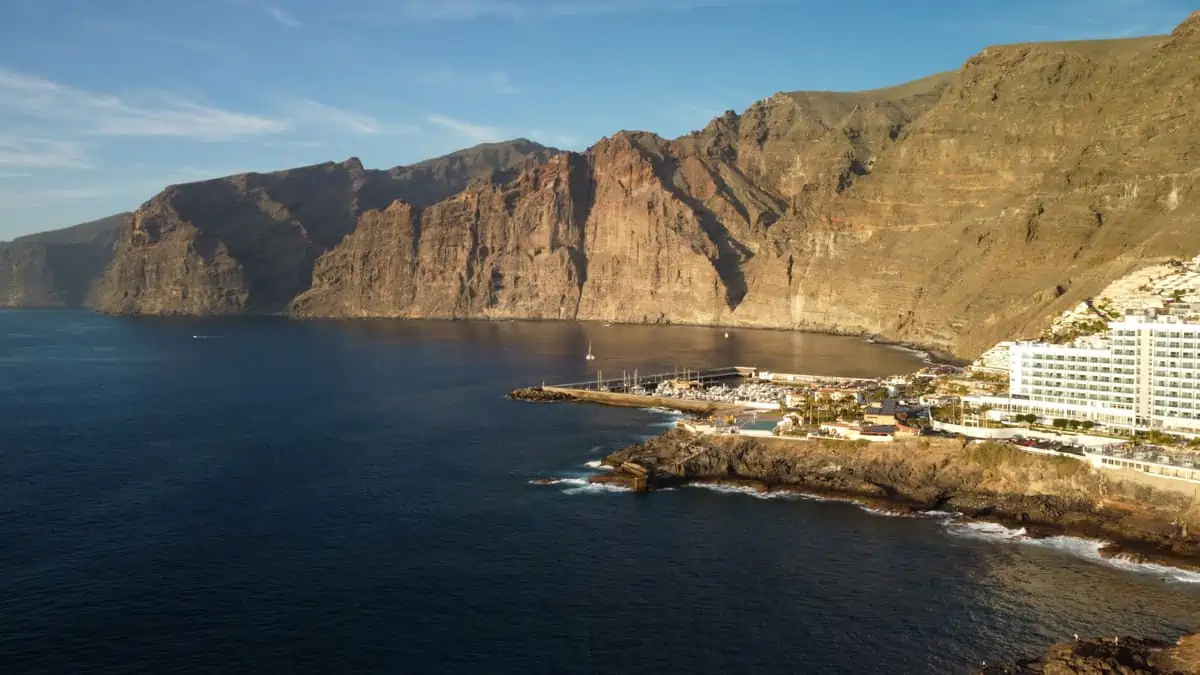
Los Gigantes: I’ve also met a few nomads who live in Los Gigantes, famous for its 600m high cliff face, stunning natural pools, and is one of the sunniest places on the islands. It may be the best place to stay in Tenerife if you want to benefit from the better weather in the south without being too much in the party scene.
Accommodation in Tenerife
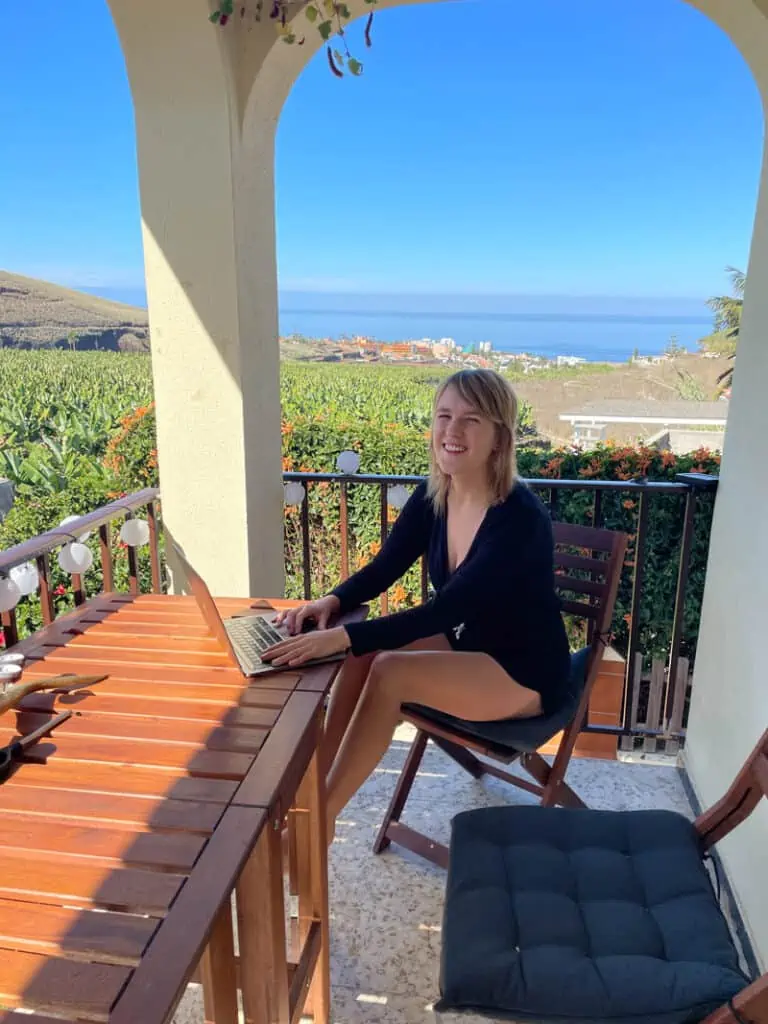
Many digital nomads choose coliving spaces in Tenerife because of the convenience.
All you have to do is make a booking, and you’ll have instant access to a community of like-minded people and the joys of not having to deal with lease agreements and apartment deposits.
If you’re only coming to Tenerife temporarily, a coliving space is a great option.
Tenerife Coliving Spaces
Igikai Coliving is near Puerto de la Cruz. It’s a two-story house with seven bedrooms, several bathrooms, a shared kitchen and living space, and a beautiful outdoor area. There are coworking desks in the living room, and other perks include an avocado tree outside the kitchen window and a hot tub in the backyard.
Nine Coliving was one of the original Colivings on the island and books up months in advance. It’s in a historical building in the center of La Orotava, a beautiful town in the north. Perks include a rooftop with amazing views, daily fresh breakfast, daily yoga, and a resident pup.
Taoro Coliving is a renovated six-bedroom villa in north Tenerife. There’s a gorgeous pool overlooking the mountains and spacious outdoor areas where people often play music.
Maraya Coliving is another coliving in the north half of the island, nestled in a beautiful barranco overlooking the ocean. Perks include stunning views, an outdoor pool, fresh breakfasts, family dinners, daily yoga, and an active community.
Amarilla Coliving is in the south of the island in Golf Del Surf. They have a mix of villas and apartments that you share with other nomads, including private and shared rooms. Perks include an outdoor pool, a hot tub, organized meetups, dinners, outdoor classes, and excursions.
Cactus Coliving is in the south in Valle San Lorenzo, one of the villages that leads the way to Teide. Perks include a wine cellar with wine workshops, community, daily breakfast with local ingredients, organized activities and adventures, coworking, and conference room, and daily yoga classes.
Oasis Coliving – A central located coliving in Playa Las Americas, within walking distance to many restaurants, bars, and shops. They offer short-term and long-term private rooms, shared workspaces, and a pool.
Palma Coliving is in the south of Tenerife in Costa Adeje. It’s a gorgeous villa with high ceilings, large windows, private terraces, a garden, a swimming pool, and a sea view. Perks include community sessions, mastermind sessions, networking events, and more, depending on the group’s requests!
Coliving spaces are plentiful in Tenerife but are also very popular, so you need to book in advance (for some of them, you need to book months in advance).
Apartments in Tenerife
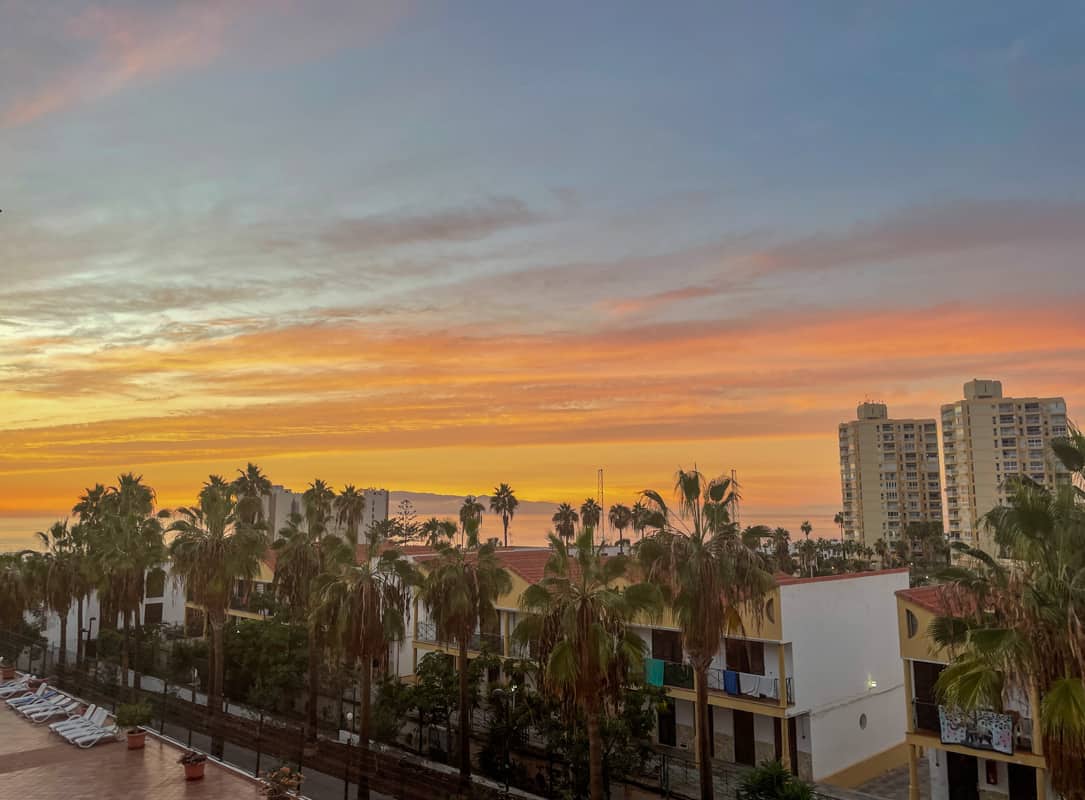
After living at Igikai Coliving, I moved into a three-bedroom apartment in Las Americas with another digital nomad I met on a catamaran tour. Talking to other nomads or asking in Facebook groups/Telegram chats is the best way to find shared apartments in Tenerife.
I haven’t gone through the process of renting my own apartment in Tenerife, but it seems that most landlords will want a background/employment check, a hefty deposit, and a lease.
If you are planning to stay in Tenerife only for a short term, I would look to a provider like VRBO, which offers quality apartment-style accommodations all over the island.
For example, This one-bedroom apartment is just over 1,000/month. It is a quiet area close to Los Cristianos, with restaurants, bars, supermarkets, bakeries, and the beach all within walking distance. It has been beautifully renovated with modern furnishings and an outdoor balcony. Perfect for enjoying the amazing Tenerife sunsets!
You can also find apartment rentals on these websites:
Hotels and Hostels: For shorter stays or if you prefer the convenience of services like housekeeping, hotels and hostels are plentiful in Tenerife.
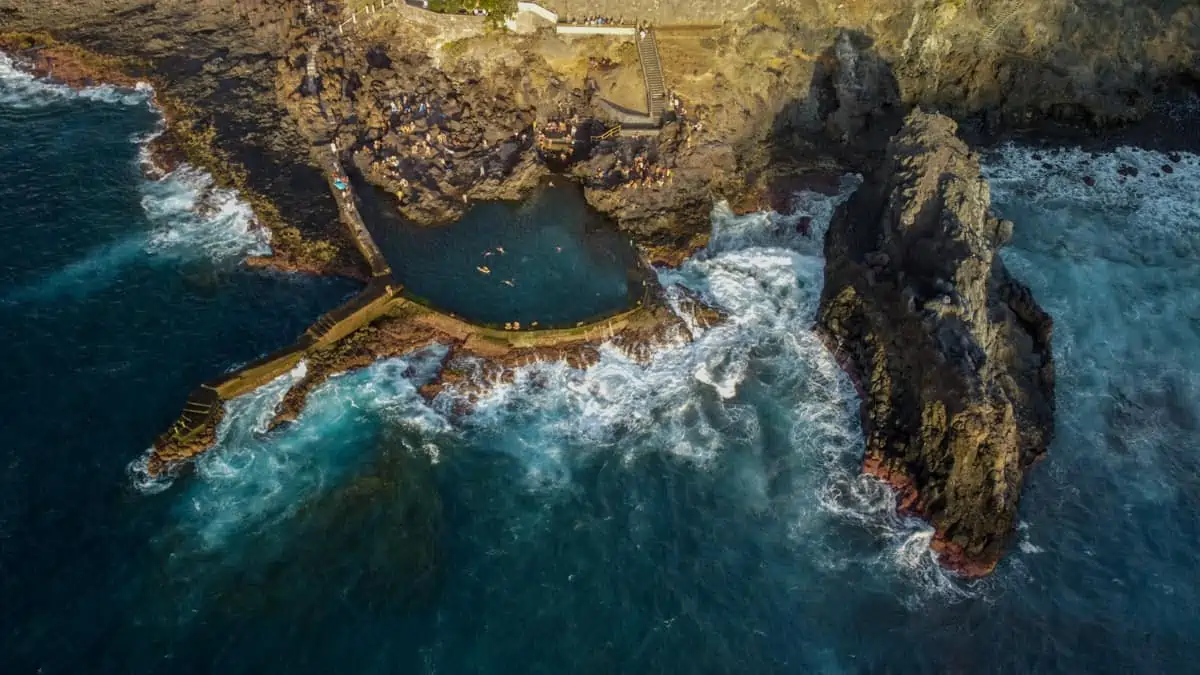
Tenerife cost of living
Tenerife is not the cheapest place I’ve lived as a digital nomad, but it’s also far from the most expensive. Generally speaking, Tenerife is relatively affordable. Of course, your expenses in Tenerife will vary significantly depending on your lifestyle.
I’ve written a separate post that breaks down the cost of living in Tenerife by category, but here’s an overview of how much I spent living in the Canary Islands.
Rent
Rent will likely be your most significant expense, and the cost will vary depending on the area and whether you’re sharing a place. Generally speaking, the South is more expensive than the North.
While staying at Igikai Coliving, I paid €800/month for a double bedroom that included all amenities, a coworking space, and free avocados (which saved me a lot)! If you choose a coliving, expect to pay anywhere from €750-1500/month.
Afterward, I moved to Las Americas, where I paid €680/month for a room in a modern 3-bedroom apartment. Bus stops are right outside my door, and the beach is ten minutes away.
Prices can vary widely depending on location and type of housing. For a one-bedroom apartment in a city center, expect to pay around €600-€800 per month, though they may be lower in more rural areas.
Monthly utilities like electricity, water, and gas typically cost around €50-€70 for a one-bedroom apartment. Internet is reasonably priced and reliable in most tourist areas, with monthly plans around €30-€40.
Groceries and eating out
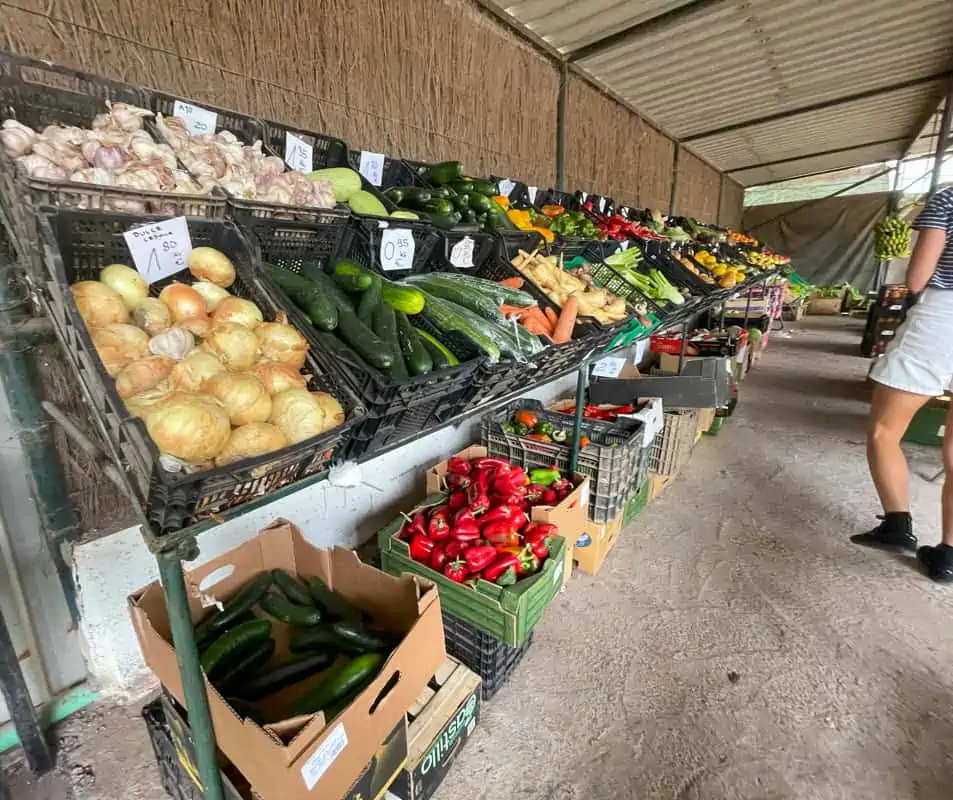
Thanks to the rich, volcanic soil, many fruits and veggies are grown locally here. For fresh produce in the south, check out Finca La Caldera. I got a bag full of fresh fruits and veggies for the week, and it only cost me €8.
Groceries are also reasonably priced; a weekly shop for one person might cost around €40-€50, depending on your dietary preferences. Mercadona, HiperDino, and Lidl are the cheapest/largest grocery stores.
Eating out in Tenerife is quite affordable, with meals at local restaurants typically costing between €10-€15. The cheapest places to eat are Guachinch (local Canarian restaurants) or the endless restaurants in the south serving English breakfast for as cheap as €3 (but you get what you pay for).
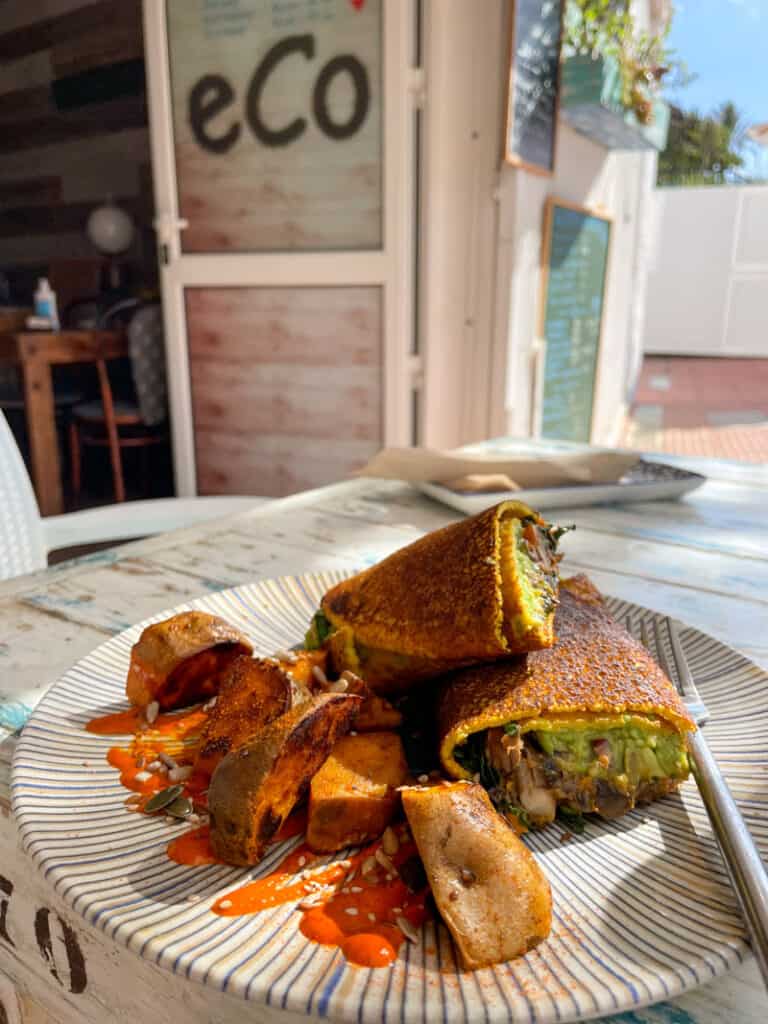
Transportation
Renting a Tenerife increases your expenses considerably. I only rented a car for a week, but it was €250 (I had insurance through my credit card). Gas was €35 to fill up the tank. If you plan to be in Tenerife for a long time, you’d be better off buying and re-selling a used car.
I use and love Discover Cars to find the best rates worldwide!
Public transportation is relatively cheap. A short bus ride costs €1.50, while a monthly pass is around €40.
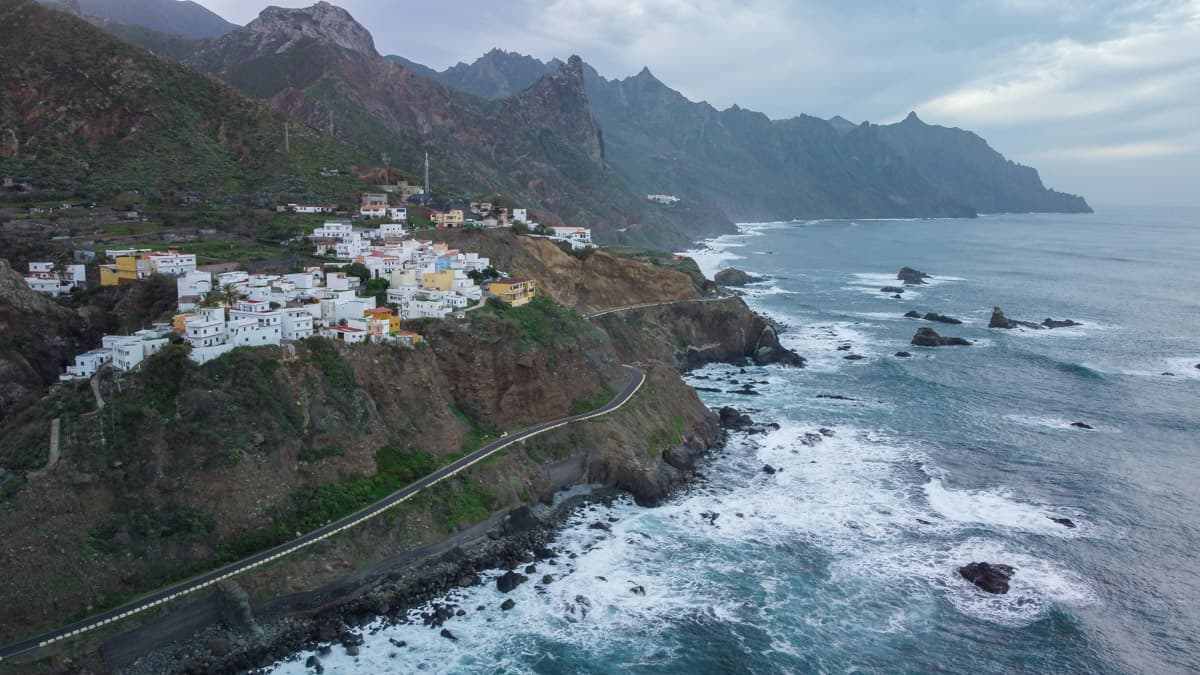
Health insurance
Thankfully, I never had to use the Tenerife health care system, but I’ve been told it’s excellent. However, health care is not free unless you are a resident, so you should get travel insurance.
Don’t forget health insurance – I use and love SafetyWing global health coverage to protect myself everywhere I go!
Entertainment and leisure
Tenerife offers a wealth of affordable leisure activities. From hiking and beach days (mostly free) to more organized tours and water sports, you can enjoy a lot without spending a fortune.
Popular outdoor activities include surfing, rock climbing, kitesurfing, hiking, and swimming at the beach.
I did yoga classes in a park for €10/class and got a gym membership for €40/month at Minimal Fitness in Las Americas.
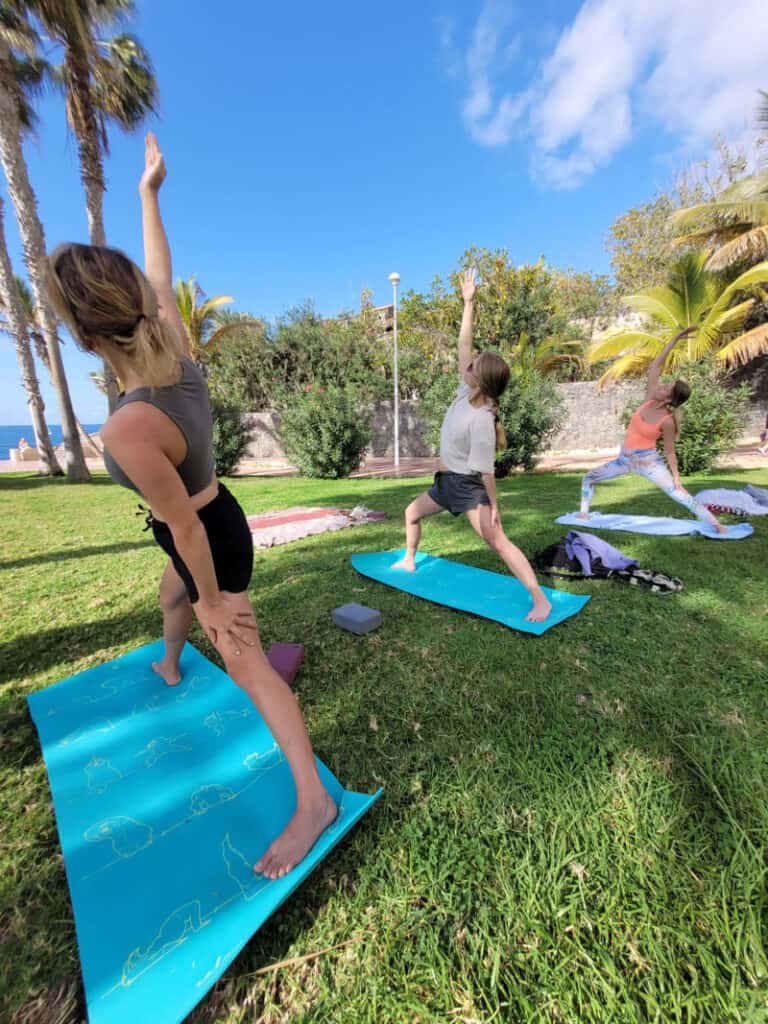
The digital nomad community here is quite active, with regular events you can join. I did many catamaran boat trips for €40 and a La Gomera day trip for €90.
Tenerife is famous for its party scene. On average, a beer is €2, cocktails are €5-10 (beach clubs tend to be pricier), and a beach party with all-you-can-drink is usually €15. So, depending on how much you like to go out, this can add to your expenses.
Coworking space
I never joined a coworking space and worked from home/cafes instead, but I looked at some coworking space prices, and you can expect to pay 150-200 for a monthly pass.
Total: As a single person, I spent around €1,500 per month in 2022 to live as a digital nomad in Tenerife. It varies per month, but that’s what how much money I spent on average.
While Tenerife is not the cheapest destination, its cost of living is quite manageable, especially considering its quality of life and natural beauty. And the cost of living in Tenerife compared to the UK is much cheaper.
As a digital nomad, balancing your budget here is feasible, allowing you to enjoy the island’s lifestyle without breaking the bank.
Coworking spaces and cafes in Tenerife
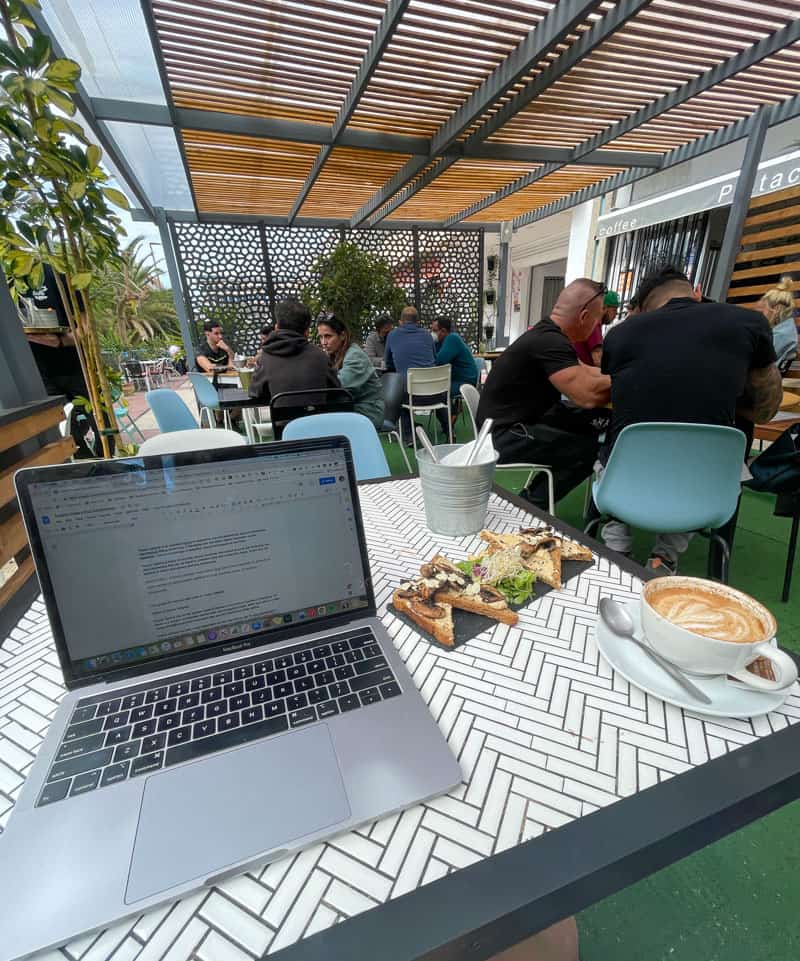
The internet is fantastic in Tenerife. Undersea internet cables are routed through the islands, and high-speed fiber internet is available in nearly all developed areas. You can also pick up a 4G SIM Card with loads of data for less than €20.
If you love working from cafes, you may find your options limited in Tenerife. It’s not yet widespread, but I found a few nice cafes to work from.
Tierra Cafe and Pistacho Coffee Brunch are my favorites.
Tenerife coworking spaces
Just as the coliving spaces are popping up, so are the coworking spaces. Here’s a look at the prices of some of Tenerife’s most popular coworking spaces.
| Day Pass | Week Pass | Monthly Pass | Location | |
| Zen Den Tenerife | 18 | 65 | 215 | Costa Adeje |
| Coworking In The Sun | 15 | 49 | 150 | Puerto de la Cruz |
| Workeamos | not offered | 60 | 170 | Santa Cruz |
| Tandem & Cworking | 20 | 75 | 180 | La Orotava |
Tenerife lifestyle
There are so many things to do in Tenerife that you’ll never get bored of discovering new places on the island.
Hit the beach
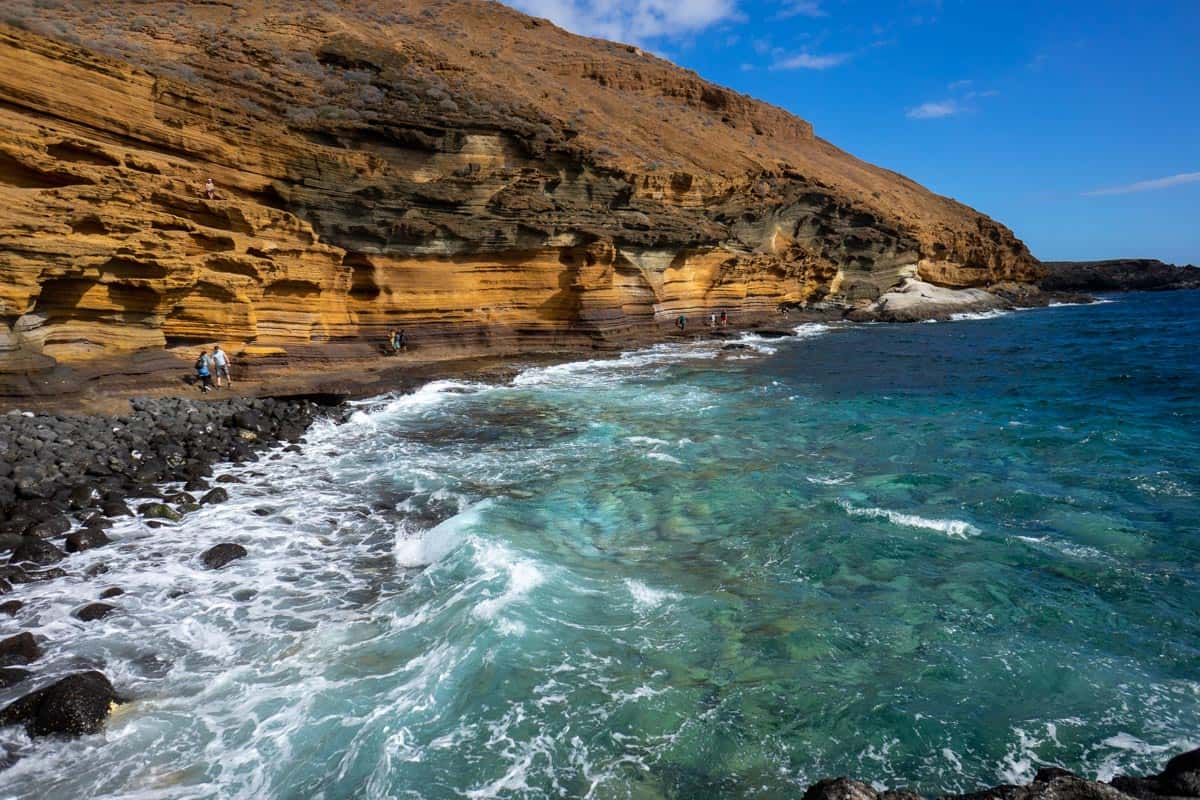
Tenerife has over 65km of coastline to explore. From the black sand beaches of Anaga Rural Park to the golden sand beaches in the south, there is something for everyone.
Beach volleyball is very popular among nomads in Los Cristianos, and you can find people playing daily.
Explore the national parks
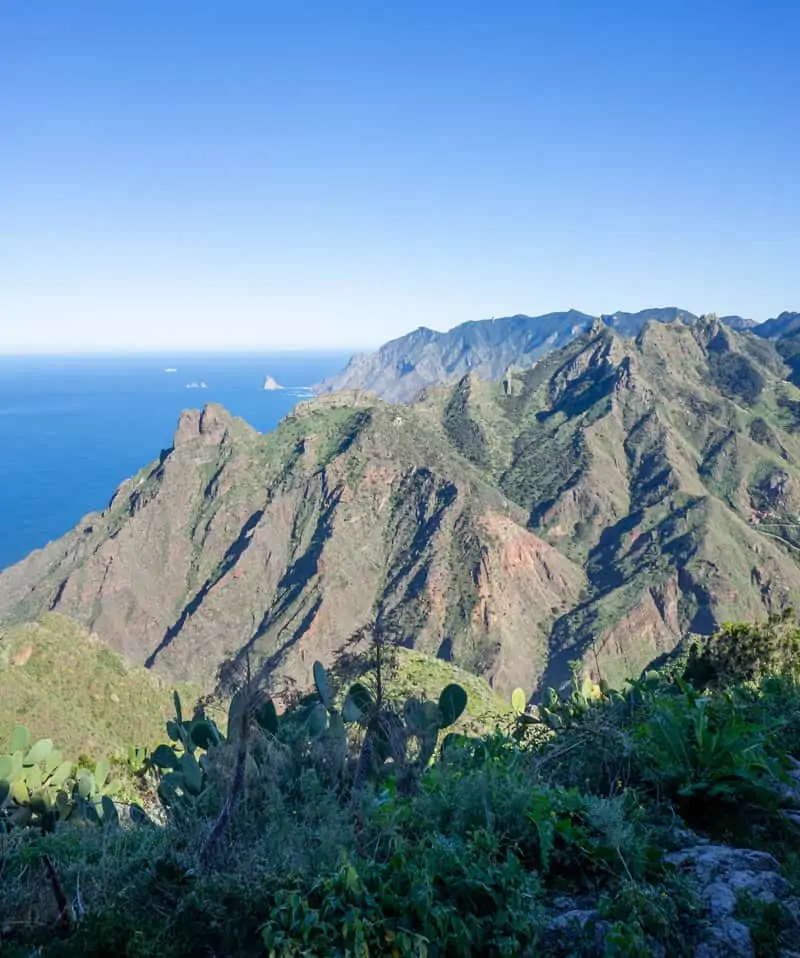
Tenerife is a paradise for hikers. The island has three main parks, each with several hiking trails.
A visit to Mount Teide, Spain’s highest peak, is a must. Whether hiking the trails or taking the cable car, the views from the top are breathtaking. The lunar-like landscape is unlike anything I’ve ever seen.
Ananga Rural Park, which covers the island’s north, is one of the most beautiful places. Its beauty makes me feel as though I’ve been transported to another country!
Lastly, there’s Masca village. Nicknamed the “Machu Picchu of Spain,” the beautiful village in the Toro mountains is home to several hiking trails and viewpoints.
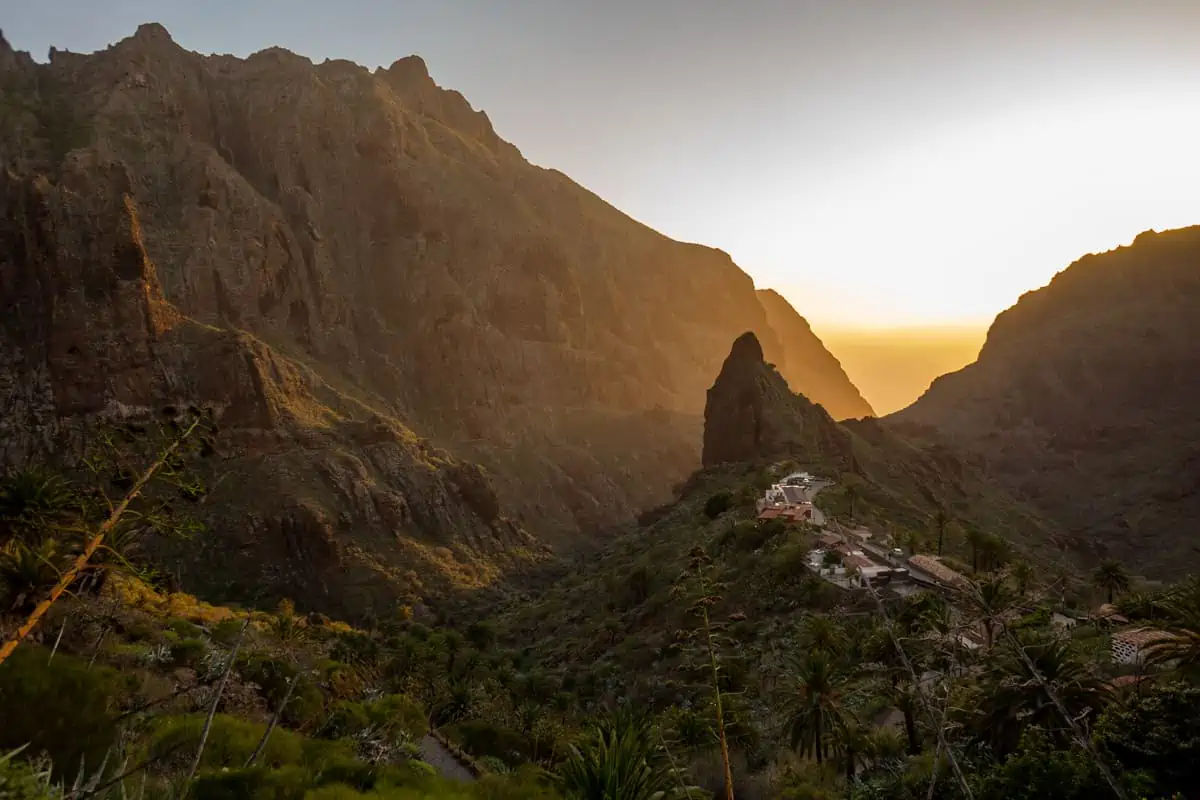
Water sports
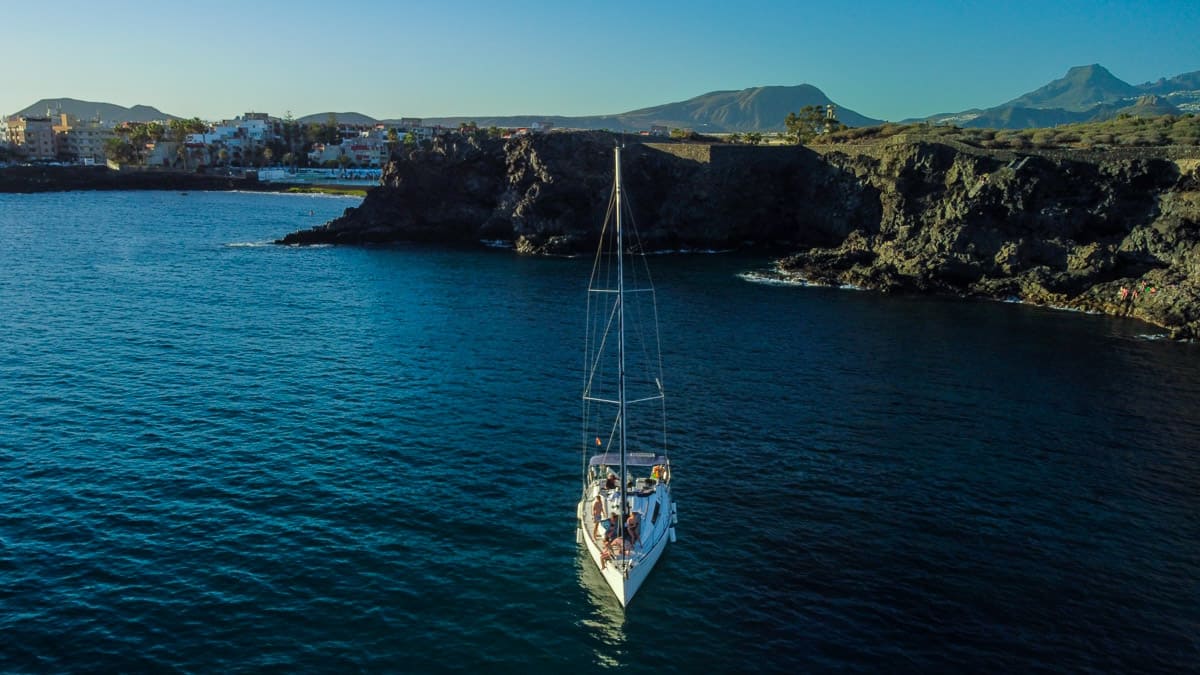
Aside from hiking, Tenerife is a hub for all kinds of outdoor sports, including windsurfing, kitesurfing, rock climbing, paragliding, sailing, and surfing. One of the main reasons people move to Tenerife is to hit the waves.
Party
Whether bar-hopping in Playa Las Americas or drinking all night at a beach party, you don’t have to look far to find a wild party on Tenerife. However, Tenerife is more than just a party destination.
Yoga and spiritual gatherings
Yoga is very popular on the island, with endless retreats and classes. Tenerife is very spiritual, and many people move here for that reason.
Your lifestyle can be whatever you want in Tenerife. You can spend your day getting drunk on the beach in the south or live in the mountains in the north, meditating daily. I’ve met many types of people here, even some who live in caves.
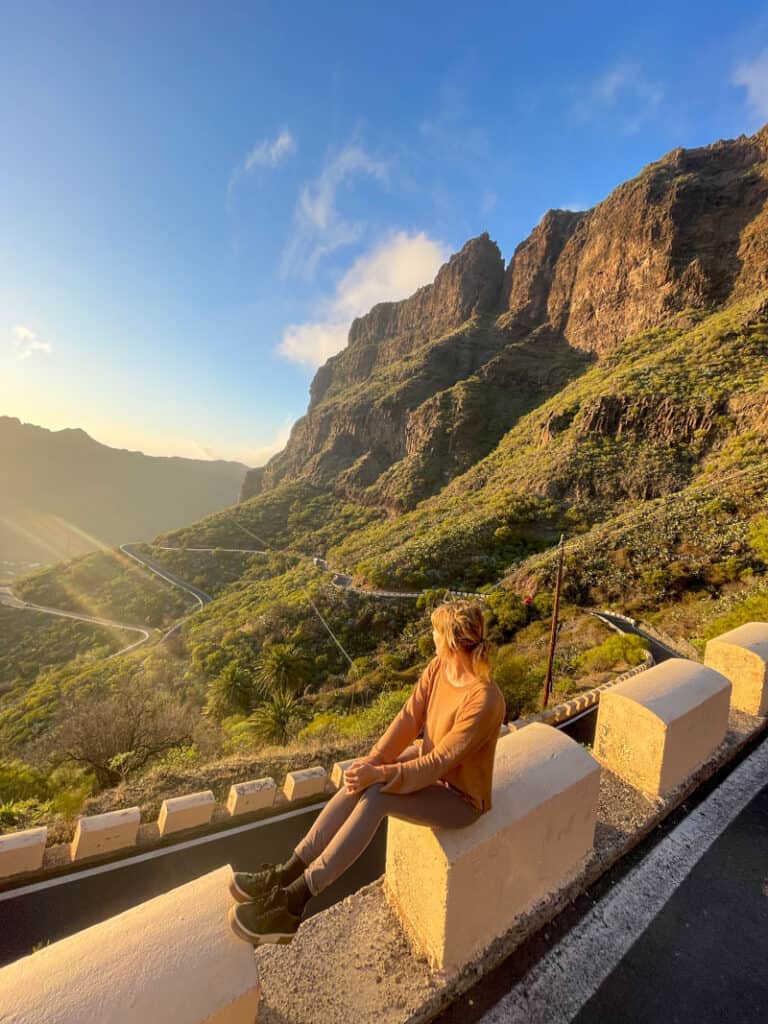
Digital nomad Tenerife community
The digital nomad community in Tenerife is active and growing every day. If you are new to the island, check out these Facebook groups. You can ask about anything, and someone will point you in the right direction. You can also find meetups and events through these groups.
Keep an eye out for informal gatherings and professional networking events. These are fantastic opportunities to mingle, share experiences, and learn from others. I’ve attended several meetups and always come away with new insights and acquaintances.
- Tenerife Remote Workers and Digital Nomads
- Tenerife Expats and Locals
- Tenerife Hiking Community
- Tenerife Spiritual Community
- Group for Yoga, Arts, Sports and Dance
- Tenerife Conscious Community
- Puerto de la Cruz Facebook group
- Meet-up group: Tenerife Remote Workers & Digital Nomads Meetup
- Tenerife Digital Nomads South Telegram Group
The sense of community among digital nomads in Tenerife has been a major highlight for me. From impromptu coffee meetups to organized events, the opportunities to connect and collaborate enriched my experience on the island.
FAQ: Digital Nomad Tenerife
Where is the best place for digital nomads in Tenerife?
Tenerife is not a tax haven, but it offers some tax incentives for businesses and individuals under the Canary Islands Special Zone (ZEC) program, which has specific conditions and requirements.
Can I work remotely in Tenerife?
Yes, you can work remotely in Tenerife, as the island offers reliable internet, a variety of coworking spaces, and a supportive digital nomad community.
Which Canary island is best for digital nomads?
Tenerife is often considered the best Canary Island for digital nomads due to its developed infrastructure, coworking spaces, and diverse community.
Where do most expats live in Tenerife?
Most expats in Tenerife tend to live in areas like Costa Adeje, Puerto de la Cruz, and Santa Cruz, which are known for their amenities and expat-friendly communities.
What is the tax on digital nomads in the Canary Islands?
Digital nomads in the Canary Islands are subject to Spanish tax laws, which vary based on income and residency status; it’s advisable to consult a tax professional for specific details.
Which Canary Island is best for remote work?
Tenerife is generally regarded as the best Canary Island for remote work, thanks to its robust infrastructure, coworking spaces, and vibrant expat community.
Where to stay in Tenerife for remote work?
For remote work in Tenerife, staying in Santa Cruz de Tenerife or Costa Adeje is recommended for their mix of coworking spaces, amenities, and networking opportunities.
Can I move to Tenerife and work?
Yes, you can move to Tenerife and work, especially as a digital nomad, but you should check visa requirements and regulations based on your nationality.
Does Tenerife have good Internet?
Yes, Tenerife generally has good internet connectivity, especially in urban areas and coworking spaces, making it suitable for remote work.
Which country is best for digital nomads in Europe?
Portugal, Spain, and Estonia are often favored by digital nomads in Europe for their favorable climate, digital infrastructure, and supportive policies for remote workers.
Is Portugal or Spain better for digital nomads?
Both Portugal and Spain are great for digital nomads, with Portugal offering a slightly lower cost of living and Spain providing diverse cultural experiences; the choice depends on personal preferences.
Final thoughts: Is Tenerife a good place to live?
As I reflect on my time in Tenerife, I realize that my affection for the island grew gradually. Initially, I didn’t fall head over heels for it, but as days turned into weeks, Tenerife revealed its subtle charms.
It’s a place that might not dazzle you at first glance, but it certainly grows on you with its unique blend of natural beauty, relaxed lifestyle, and a supportive community for digital nomads.
With its reliable internet, diverse coworking spaces, and a variety of living options, Tenerife offers a solid choice for nomads looking to explore Europe. While it may not top my list of digital nomad hotspots, it stands out as a commendable option, offering a balance between work and leisure.
So, for fellow digital nomads considering a European base, Tenerife is worth considering. It might not be love at first sight, but give it time, and you might find yourself charmed by this island’s understated allure.
Moving to Spain? Check out these posts!
- Pros and Cons of Living in Spain
- 15 Cheap Places to Live in Spain
- Top Whale and Dolphin Watching In Tenerife
- 35+ Fun Things To Do In Tenerife Besides The Beach
- Cost Of Living In Tenerife As A Digital Nomad
- 8 Beautiful Tenerife Coliving Spaces
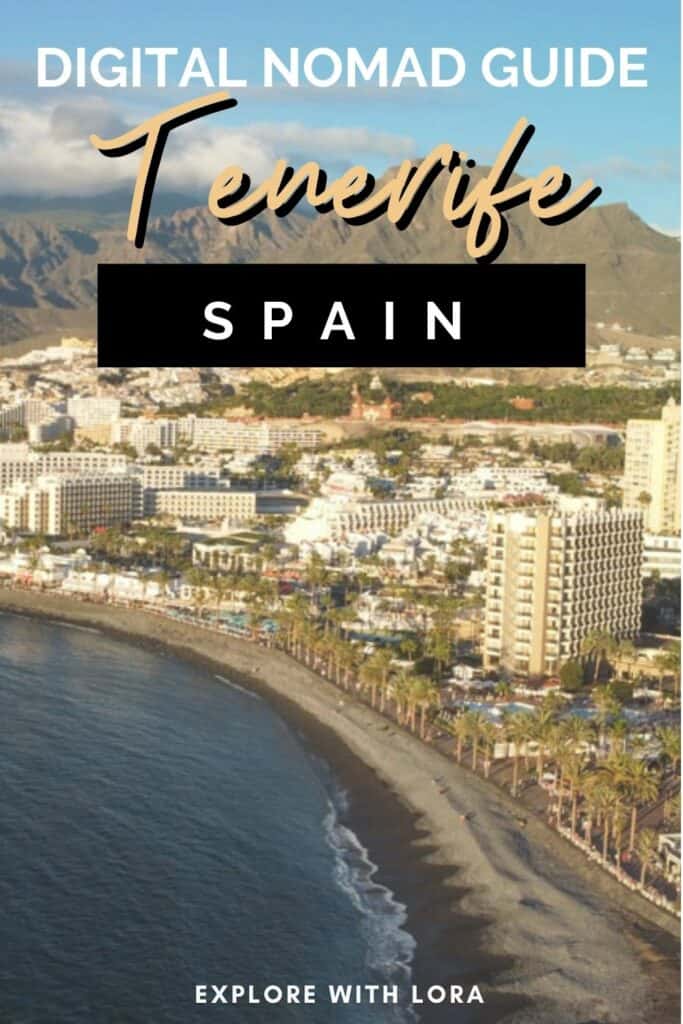

Thanks for all the useful information <3